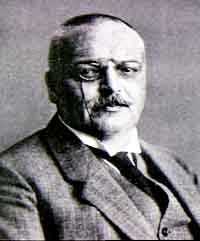The Scenario: A German psychiatrist, Alois Alzheimer, had a patient in her fifties with accelerating memory, language, and behavior problems. (1a) The Discovery: After her death, Alzheimer discovered an 'unusual disease of the cerebral cortex', various abnormalities of the brain and the cerebral cortex was thinner than normal. Also, there were signs of the amyloid plaque and neurofibrillary tangles. (1b) These two images show what Alzheimer found within his patient's brain. They are formed due to some malfunction between neurons in the brain. Take a look at the diagram below. | Alois Alzheimer Born in 1864 in Markbreit in Bavaria, Southern Germany, Alzheimer studied medicine in Berlin, Aschaffenburg Tubingen and Wurzburg where he graduated with a medical degree in 1887. (1a) |
The Importance of Brain Neurons:
|
Video Clip:Understanding Alzheimer's Disease
NOTE: "Stephen D. Silberstein, MD, is a board-certified neurologist.
He is Professor of Neurology and Director of the Jefferson Headache Center
at Thomas Jefferson University. He is a Fellow of the American College
of Physicians (ACP) and the American Headache Society (AHS), and the American Academy of Neurology (AAN)." (1d)



